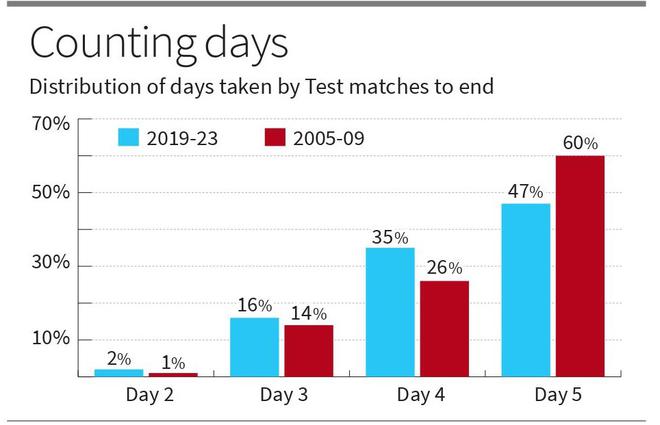The Board of Control for Cricket in India (BCCI) has unequivocally highlighted its emphasis on prioritising the longer format of the game, which has been furthered by designing an “incentive” mechanism for the players. This innovative initiative aims at elevating the appeal of Test cricket to match the lucrative contracts offered in the Indian Premier League (IPL). Under this scheme, players meeting specific criteria have the potential to earn up to ₹60 lakh per Test match including match fee, signalling a concerted effort to elevate the status and allure of Test cricket in India, mirroring the financial rewards associated with IPL engagements. The coinage of the term “incentive” has been questioned by none other than the Indian coach Rahul Dravid himself, as he prescribed “reward” to be a better alternative. Notwithstanding the same, the significance of domestic cricket by mandating the participation of centrally contracted players in the Ranji Trophy has been recognised. This directive signals a deliberate effort to emphasise the foundational importance of regional cricket tournaments and enhance the overall fabric of Indian cricket. While the BCCI’s focus has been made clear, it remains to be seen from the player’s perspective if he would choose the toil of tests over the fame and easy money of IPL.
Influence of T20 in Test cricket
The influence of T20 cricket on players’ strategies in Test matches is unmistakably apparent, particularly exemplified by the England team’s adoption of a distinctive “Bazball” style in the classical format of the game. This often criticised style of play places a notable emphasis on employing strategies commonly associated with the shorter format of the game in Test cricket. While England openly acknowledges this as their approach to Test cricket in the T20 era, the euphoria around it is over-rated. A closer examination of the data reveals substantial changes in Test cricket dynamics across all the Test-playing nations following the rise of T20 cricket.
For instance, in 2009, the top 20 ICC-ranked batsmen boasted an impressive average Test score of 49.24. The current top 20 ICC-ranked batsmen exhibit an average Test score of 47.5. If a broader spectrum of batsmen is considered, the gap is likely to widen even further. Meanwhile, when it comes to the strike rates of the same group of batsmen, a notable shift is observed. The current average strike rate stands at 59.6, a marked increase compared to the 53.4 average strike rate of the top 20 Test batsmen in 2009. When excluding Virender Sehwag from the list of top 20 batsmen in 2009, given his outlier status with a considerably higher strike rate, the average strike rate of the remaining players diminishes to 51.9. Conversely, the average strike rates of the current top 20 bowlers (26.5 and 52.9 respectively) are noticeably lower than those of the top 20 bowlers in 2009 (30.5 and 60.9 respectively). The impact on the results of Test matches is equally intriguing. Between 2005 and 2009, a substantial 27% of all Test matches played ended in a draw. In contrast, from 2019 to 2023, only 14.8% of the Test matches played concluded with a draw. During the period from 2005 to 2009, a considerable 59.8% of Test matches managed to extend until the fifth day. In contrast, from 2019 to 2023, only 47.25% of matches achieved the same duration. The evident change in the trends of Test cricket undeniably signifies an influence from its shorter-duration counterpart, T20 cricket.

A lucrative bait
Another trend that surfaces due to the escalating influence of T20 cricket is the waning interest of players in the traditional, longer format of the game. In the initial stages of the T20 era, it served as a voluntary retirement option for players renowned for their flamboyant playing styles. However, as T20 gained increased popularity and financial allure, even players in the prime of their careers have thrown their support behind the shorter format.
This shift highlights the transformative impact, not only as a retirement avenue but also as a driving force reshaping the preferences of players in the cricketing domain. The contemporary cricket calendar is saturated with a multitude of series, leagues, and tournaments spanning different formats, affording players limited rest intervals. The relentless schedule presents a potential breeding ground for fatigue and injuries. Consequently, players may find themselves inclined to prioritise formats that promise higher financial rewards along with better viewership. Considering this, the BCCI’s decision to incentivise Test cricket emerges as a welcome move. While other cricket boards may draw inspiration from the BCCI, it’s worth noting that not all cricketing nations might have the financial capacity to offer incentives. Thus, the financial landscape of cricket could have a spillover effect on the long-term sustainability of Test-playing nations. What remains to be seen in this battle of wits between the two BCCIs — The Board of Control for Cricket in India or the Board of Control of Cricketers in India — is who has the final laugh.
Jimut Bahan Chakrabarty is Assistant Professor, Operations Management & Decision Sciences, Indian Institute of Management, Kashipur. Himadri Shekhar Chakrabarty is Assistant Professor, Business Environment, Indian Institute of Management, Lucknow. Aniruddha Jena is Assistant Professor, Communications, Indian Institute of Management, Kashipur.







